Orlando has a rich history and preserved historical architecture worth viewing from a walking tour of its streets. On April 5, the Downtown Development Board of the City of Orlando hosted its limited monthly walking tour on Orange Avenue and Church St. The tour exhibited a 28-monument itinerary and compiled history and architecture on a 60-minute walk around Downtown Orlando.
While these guided City of Orlando events are hosted monthly, they are only from October through May. It’s a fun opportunity to be able to participate in this cultural program. And while not available during the summer, there are a number of online self-guided GPS and ArcGIS maps to help explore this City Beautiful.
A Walk Through History
Orlando is located in Orange County and was once named Mosquito County during the 1840s due to the Spanish name “Los Mosquitos.” According to the Florida Department of State Division of Human Resources, the orange industry began as early as 1493 when the seeds were brought. It reached its industrial bloom during the 1860s when railroads were implemented, facilitating citrus transportation.
The area was primarily named Jernigan due to the Jernigan family, which established a settlement in the Central Florida area during the 1840s. As they slowly grew, the first post office was established on May 3, 1850.
In 1857, the city was officially named Orlando. Central Florida’s area owes its name to the folklore figure Orlando Reeves, known for his work as a soldier near Sandy Beach Lake. Several monuments have been preserved and can be seen during the walking tour.
Interestingly, William Shakespeare’s 1623 comedy “As You Like It” is said to be one of the reasons that this Central Florida city received its name. “As You Like It” tells of love at first sight with passion and emotion as the protagonist Orlando falls for Rosalind and writes poems for her.
Central Florida and its greater area were affected by industrial change, mainly the citrus industry, and the signs are still prevalent today with landmarks such as the Downtown Train Station and its railroads.
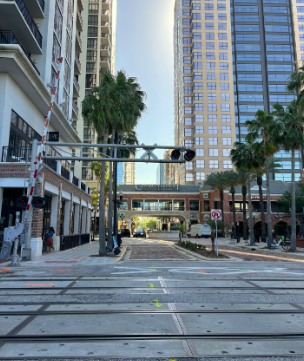
(Beatriz Trujillo)
As the city’s guided tour continued, Gertrude’s Walk can be seen. The walk expands through three city blocks adjacent to the railroad and is named after Gertrude Sweet Newell. An exciting and historical landmark around the trails is Gertrude’s sign —she was thought to be the prettiest woman in Orange County. Acquiring her walk is seen in the picture below.
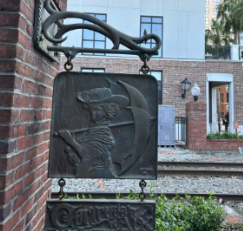
(Beatriz Trujillo)
The exciting story behind Tinker Building involves Joseph B. Tinker, a Chicago baseball player and Real Estate entrepreneur, who moved to Orlando to manage the Orlando Tigers in December 1920.
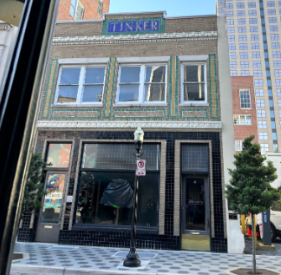
(Beatriz Trujillo)
Known as “Joe” Thinker, he joined the Chicago Cubs in 1902 after winning the World Series victories in 1906, 1907, 1908, and 1910. As the Orlando Tigers manager, he purchased the building in 1925. Becoming a symbol of Orlando’s history, the building entered the National Register of Historic Places in 1980.
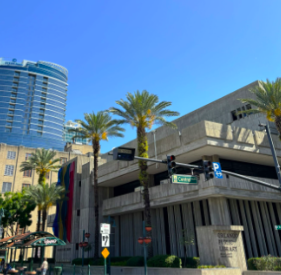
The library opened on November 8, 1923. The Orlando Public Library was named Albertson Public Library after Capt. Charles Albertson, 1856-1932, who donated his book collection to the city of Orlando and later established a building to store them. Reformation happened during the 1960s, as the original library was demolished in 1964, and the Orlando Public Library (OPL) opened in 1966. The architect responsible for the renovation was John M. Johansen. Since first opened, the library has been 290,000 square feet and was renovated in 1985 by the Schweizer Associates design group. It celebrates its 58th anniversary this year.
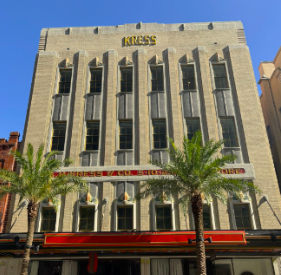
(Beatriz Trujillo)
The Kress was built by Edward F. Sibbert by the G. A. Miller Company. Originally a retail store. S.H. Kress & Company retail store in 1896. It became a historical landmark in 1978.
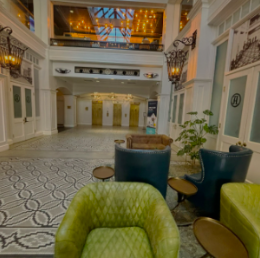
(Beatriz Trujillo)
The Angebilt Hotel first opened in 1923 and was built by. Jose Angel was designed by architect Murry S. King which was inspired by the Pennsylvania Hotel in New York. This building is known for its resilience, suffering through several natural disasters such as a hurricane in 1944 and a fire in its ballroom in 1963. Nonetheless, it still remain a symbol of Orlando’s history and nowadays hosts rentable office rooms
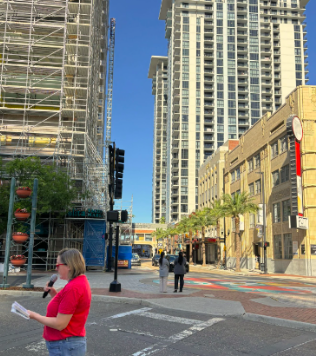
The above picture juxtaposes the present with the past as towering skyscrapers blend eras in a single frame alongside the historic First National Bank Building.
The tour also discussed the marvel of the 1911 First National Bank and Trust Co. Building. Howard M. Reynolds designed the monument, which some explain as Egyptian Art Deco fusing Art Deco’s geometric patterns and Egyptian motifs.
Showcasing architecture, history, and beauty, the City of Orlando tour included 28 monuments around Lake Eola and Church St. Even though all edifices are remarkable, the banks, buildings, and hotels seen represent different things and recognize different historical periods.
The Tinker and Kress buildings are outstanding monuments, due to their aesthetic. Nonetheless, the Orlando Public Library also has an interesting history and essential use for the Orlando community.
From 1857, Central Florida has gone through major historical and economic landmarks such as the Great Depression, industrialization and railroad expansion. Several monuments have been preserved and are worth seeing through a walking tour.

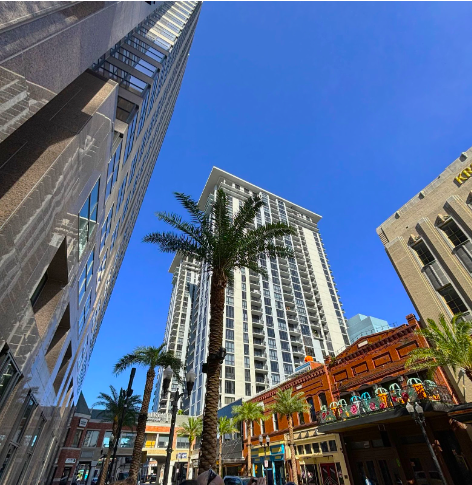

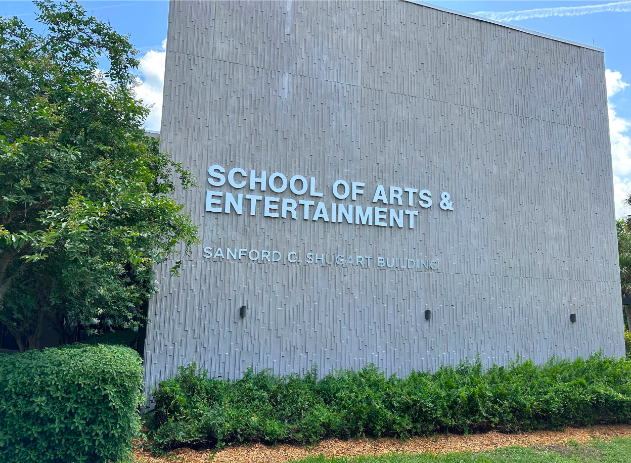
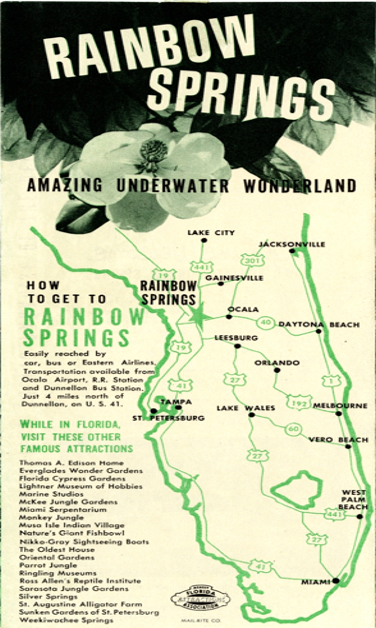
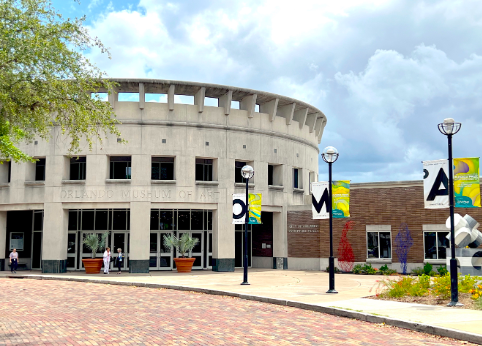
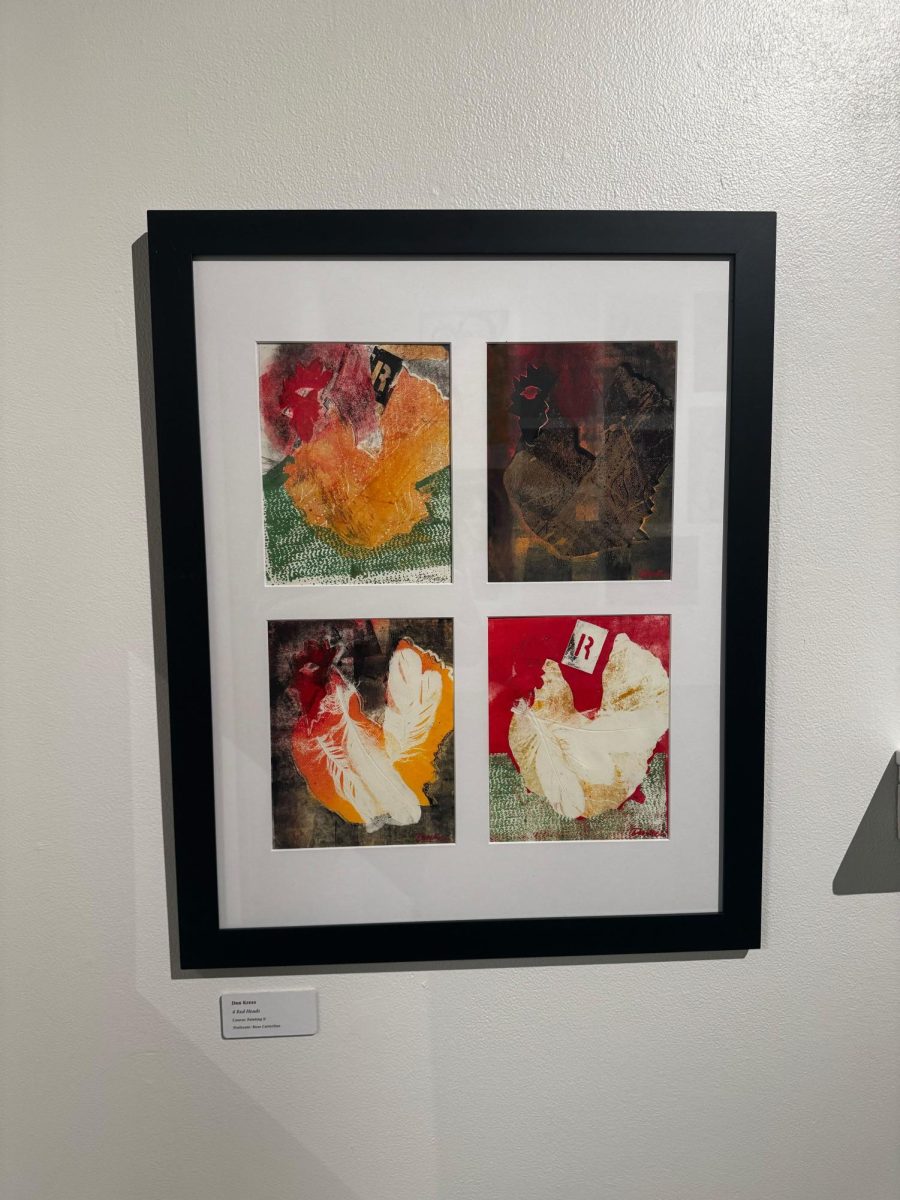
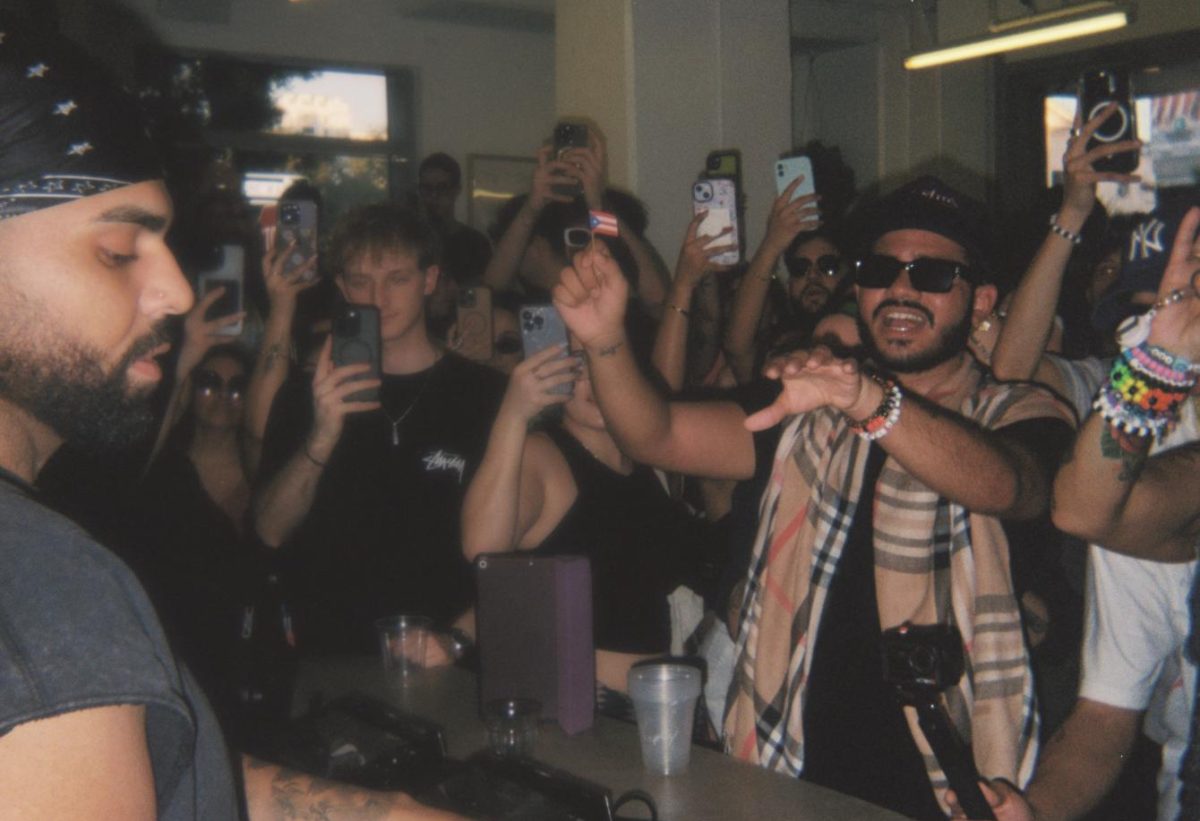
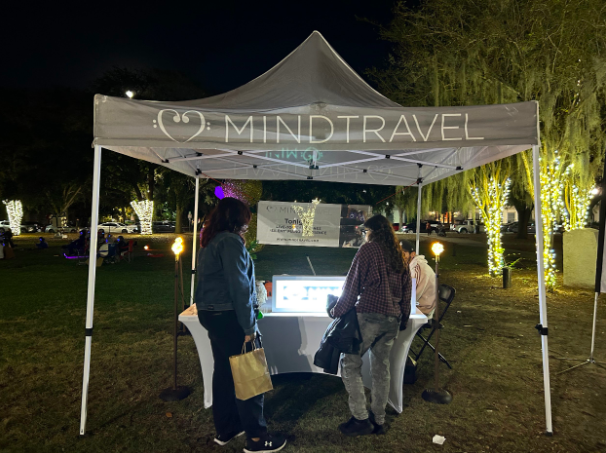
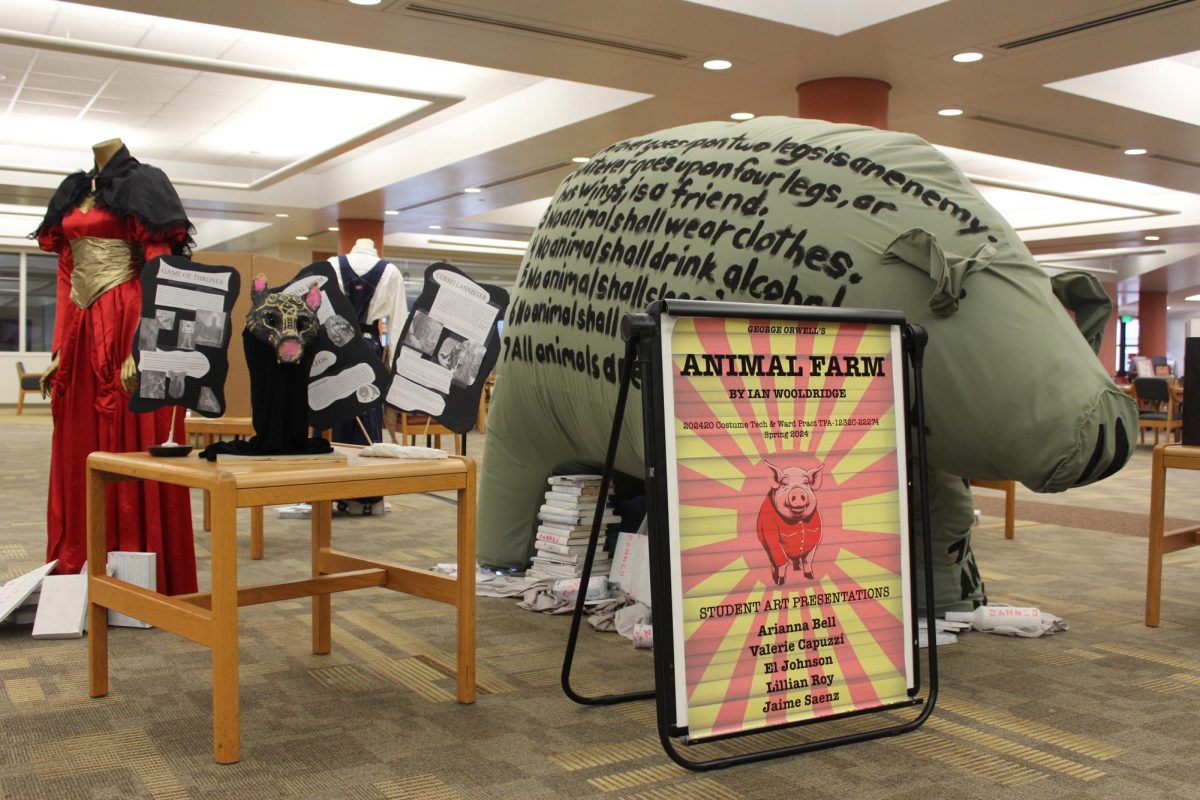

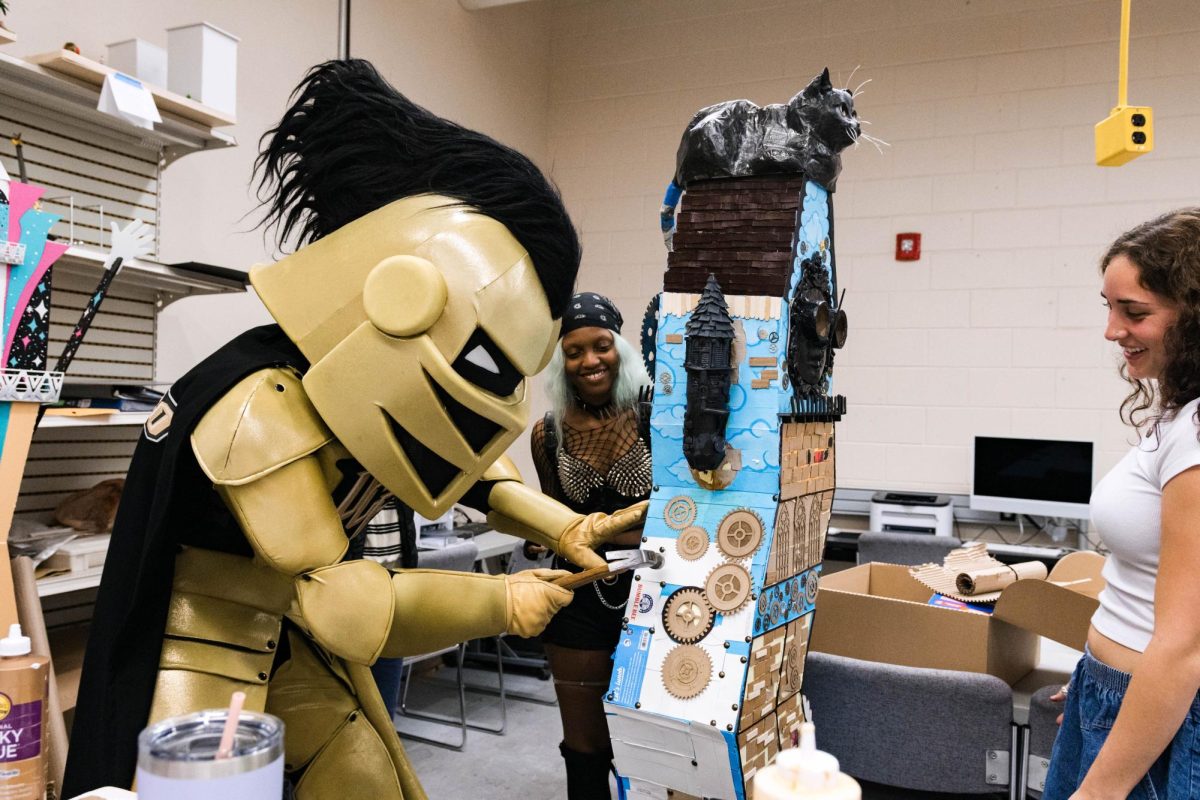

![[Photo] MegaCon 2024 Brings Families, Friends Out For Fandom](https://valenciavoice.com/wp-content/uploads/2024/03/DriftNegreira-e1710100973735-1200x1054.png)

Joane Altidor • Jun 27, 2024 at 5:43 pm
Wow thank you so much for this informative literature. I actually did tour with a graduating class from the Bahamas this year about Downtown Orlando. I would have loved to have this article as a reference for the students. Great job and I am looking forward to more.